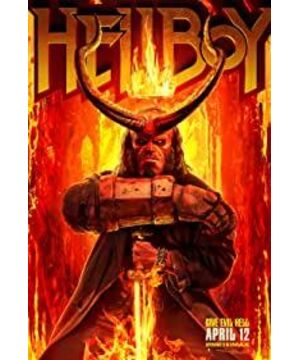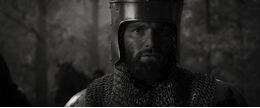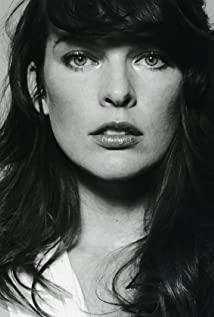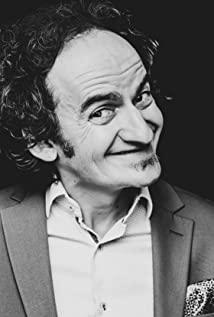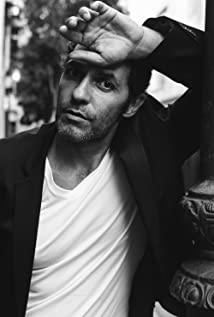It may be difficult for non-Mike Mignola fans to understand the style of "Hellboy", whether it is a comic or the corresponding movie. If Marvel and DC do have the universe, then "Hellboy" should belong to the dark horse universe-in other words, it is not the way we are used to American super British movies & comics. "Only a storm can knock down a big tree." The sentence in the title is actually a line from the famous game producer Hidetaka Miyazaki’s masterpiece "Dark Souls 3", which ostensibly means "I want to defeat Youmu, the giant king, must use a weapon called Storm Control." This kind of medieval black fairy tale style, metaphorically and irrefutablely targeted, extended to the filming of the "Hellboy" movie, naturally emphasizing that "faithful restoration of comics is the only way to solve the bottleneck of filming". It's like a cage looking for its bird.
Although Mike Mignola himself was originally the painter of Marvel's "Dare Man", he later drew Batman comics in DC (Mignola's Batman, the most famous is that Gotham by Gaslight, let Batman and the Escape Hand Jack meets-the fat and strong Batman, who bends his knees and waved his hands, looks like a "five short body" in the painting style is very close to the characters in "Hellboy"), has been in the industry for ten years, and has gradually become a beautiful man with many fans , But suffers from always making clothes for others, and never has an original role exclusively for himself. In the early 1990s, great gods including Frank Miller and Dave Gibbons jumped to the dark horse club. Mignola also chose to leave and joined the dark horse with the monster "Hellboy" he created. At the 1993 SDCC Comic Con, "Hellboy" The form of the short story appeared in the manga exhibition magazine, and it became an instant hit. Seven months later, the first short feature of the series "The Seed of Destruction" officially began serialization. This story with only four chapters in total set off an explosion in the American comics world. In 1994, please remember this year: In this year, the story of Hellboy as the protagonist kicked off in 1944 fifty years ago.
The name "Hellboy" itself is a Chinese paraphrase. The original name of Hellboy should be literally translated as "Hellboy". The change from "童" to "爵" is to make the protagonist more like a dark superhero in the Chinese context, but In fact, Hellboy is indeed a big boy from hell: In the background setting of the series, Hellboy was summoned from hell to the world on the island of Tarmagant on the coast of Scotland in order to reverse the defeat by the German Nazis. However, this summoning demon hasn't grown up yet, just a little red-skinned boy with horns and tail, petrified in his right hand, which is different. He was supposed to go to the Nazi wizard Rasputin, the little demon boy who worked for Hitler, and went to the home of Trevor Bruttenholm, a supernatural scholar in the United Kingdom (the domestic custom called him "Professor Bloom"). Professor Bloom named him Hellboy. After the war, Professor Bloom and Hellboy, who are like father and son, both joined the U.S. military's organization, the Paranormal Investigation and Defense Agency (abbreviated as BPRD), which was established by the US military to respond to the threat of supernatural forces. The big scene of the villain-this is the basic story core of the "Hellboy" series of comics.
Many American comic readers (including myself) entered the pit of "Hellboy" and the first book was "The Seed of Destruction", the 2004 film adaptation of "Hellboy" by Gilmour del Toro, and the subsequent "Hellboy" Baron 2: The Golden Legion is based on this original version, but-the author of Hellboy, Mike Mignola himself, is not very fond of Seed of Destruction. If you have seen Mignola’s works, it should be clear that this freak author is extremely B-level and obsessed with Cthulhu culture in the core of his creation. He has a relationship with Frank Miller has a similar dark temperament, but it is different from Miller. If Miller's creative style is somewhat similar to Kazuo Koike who created "Skull 13", then Mignola is simply the direct biography of Nagai Ho, who is world-famous for his "Devil Man" series, in the West. For the work "Hellboy", the analogy of "Demon Man" is more appropriate: the protagonists are all hell demons who descend into the world with impure motives, and they are all influenced by human emotions, and in turn oppose those The evil horns of non-human beings. The villains in the two works are both systematic, drawing on Western religious legends and at the same time Cthulhu style. Take the recent hot series of "BPRD Hell on Earth" and "Hellboy Hell" as an example. The villain is Leviathan and Behemoth. The various Satan heroes and the family of hell are no match for the incarnation of the world destroyer. The power of destruction controlled by the right hand of the Demon Hellboy (this hand is actually the hand of the Hellboy’s old father when he was born. It is the hand of the creation angel. This part is a long story. Interesting Friends still go to read the original). The battle handling of "Hellboy" comics is also similar to that of "Devil Man": it is minimalist and has a strong sense of oppression. Mignola himself interprets his style as "extremely general". This style is embodied in that each whole page is only black and white, and one or two other colors, such as red and ocher, and then red and ocher are distinguished by different brightness. Two color numbers. All the shadows are completely black and fill the picture with large blocks of color instead of lines. I am also a creator of European and American style comics, and I have a little understanding of Mignola's drawing method: Compared with line shadows and Marvel-style comics that use a lot of color, Mignola's mature style emphasizes film-like mirroring-although only In a few strokes, he will also highlight the flying gravel, smoke, afterimages, and the slight incompleteness of buildings and lives. He always pays attention to the pursuit of composition and color balance, no detail in the picture is unexplainable. In "Hellboy Hell", we can see a lot of close-up shots, as well as continuous perspective switching. However, Mignola's close-ups do not present more details of the depicted object, and when switching perspectives, they are more inclined to use continuous or high-contrast color contrast to reflect the dynamics of the picture.
After understanding these characteristics of Mignola’s original comics, let’s take a look at the beginning of "Hellboy: The Rise of the Blood Queen" by Neil Marshall: it is easy to recall the color treatment of "Sin City", all black and white, Use bold, solid colors on subjects that need to be emphasized. The red cloak of the "Blood Queen" is the only color used in the picture except black and white. The blood queen, played by Milla Jovovich, was chopped off during the fight and blood ran all over the place. The severed head was locked in a box and sealed, and the body was dismembered and distributed by the "righteous knights" who belonged to the past.
After the tribute to Frank Miller was over, the colors returned with the times. The protagonist Hellboy debuted in a broken car and immediately began an American wrestling match (this contest naturally ended in blood). The new version of Hellboy, played by David Hubble, is completely faithful to Mignola's original comics from clothing to body shape to makeup, especially the part of facial makeup. While expressing the red skin, it deliberately uses a higher degree of integration. Makeup look, make the face red as uniform as possible, and consistent with the body color. The effect of this is to make the dynamic movie screen closer to the color use of the comic itself. Whether in the BPRD headquarters or in relatively gorgeous scenes such as the British OSIRIS CLUB, we can find traces of the original comics in the film grading: colors of the same color system, large areas of pure black shadows, frequent viewing angle conversions, and Close-ups that pay attention to detail reduction-it's like quoting Mignola's cartoon directly in a dynamic way.
Hellboy’s old adversary, "Fire Fighter" Clonan, also appeared in this film, and was surprisingly reduced to a neuroscientist who didn’t look like a neuroscientist (just like Gilmour del Toro’s transformation in the past) ) Cold character. The famous scene of Rasputin summoning the Hellboy and the scene of the birth of the Hellboy as a child are restored in this film with a shooting technique similar to the recently controversial MV "DEUTSCHLAND" of the Rammstein Chariots. Although the time of "Crystal Ball Recalling the Old" is very short, it is obviously necessary to reproduce the original setting for this new heavyweight IP. Neil Marshall's fundamentalist orientation towards Mignola's original work is very serious, and his subtle manipulations can even be described as "cautious". In this film, you can see many centrally symmetrical compositions, exaggerated close-ups, and undisguised bloody scenes-not only undisguised, those broken arms, corpses and organs even decorate the picture naturally. Up. One of the most explicit is the scene of the resurrection of the Blood Queen in modern times: Milla Jovovich’s remnant body just sewn on the head sits on the sofa and watches TV. The remote control is in his broken hand in the distance, and the boar servant brings it up. Two legs... 80% of the scenes that absolutely belong to the B-level film will disgust the audience who don’t watch this type of film very much, but those from Herschell Lewis "Blood Feast" (remember the sentence LEGS CUT OFF in the newspaper) Most of the fans who watched it all the way would have a knowing smile.
Speaking of this, it is necessary to mention the pioneering work "The Seed of Destruction" again. As mentioned earlier, "The Seed of Destruction" is probably Hellboy's father Mignola's least favorite "Hellboy" work. In the early days of the character creation, because Mignola has just moved from DC to work, the mature style has not yet taken shape, which leads to the comic draft of Seed of Destruction that looks like it was created in the Batman style of Gotham by Gaslight. A derivative and comical. The fledgling colorist Dave Stewart handled the cover for the new Hellboy comics. The color god who won the Eisner Award eight times in the future contracted the coloring work of Mignola's own screenwriters-in other words, "Destruction of The script of "Species" was not written by Mignola either. The script of "The Seed of Destruction" comes from John Byrne, a veteran American comic screenwriter, who has created some of the "Fantastic Four", "Superman" and "X-Men". The plot style has always been known for its stability. After understanding this, you will understand why there is such a big rift between the stories in the first volume of Hellboy and the stories that follow.
In 2004, Dark Horse Comics republished "The Seed of Destruction" in the form of a collection, as the first volume of the complete series of "Hellboy". Among the highest-voted comments from Amazon readers in the United States, there is a very good comment-A Good Introduction to a Great Artistic Creation. In other words, "The Seed of Destruction" is only an introduction, which is only an introduction, and has not really entered the door of the "Hellboy Pedigree". Gilmour del Toro used this to adapt the movie and added a lot of private goods. Not only did he change the appearance of the characters, he even changed the settings of the protagonist, Professor Bloom, and the "Kerman". Lost. It is like last year that Netflix invested in the filming of "Devil Man Crybaby" for Yuasa Masaaki, which turned out to be a "Yuasa series" and lost the spiritual core of Nagai Hao. Some viewers who have never watched "Demon Man" animation during the Showa period may be amazed by Yuasa's artistic style and evil stories and become new fans of Devilman, but it would be too far-fetched to say that this is "Demon Man".
It is precisely because of the faithful restoration of the original comic style that "Hellboy: The Rise of the Blood Queen" has a fatal attraction for fans of American dark-style comics. This film is a "weird movie" that puts a lot of energy into scenes such as the fighting of ogre monsters. It is represented by the mirror image of Kui Ye fighting with giant enemies in the PS4 console game "New God of War". Hellboy's oppressive feeling against the ogres. Hellboy throws a javelin, runs, avoids and shuttles between the continuous skills of the giant axe hitting the ground, and finally comes with a few close-up finishing moves, swinging the giant sword to mutilate the enemy’s limbs and shatter the head. He really thought he was watching. A live broadcast of an exclusive triple A masterpiece. Many viewers on imdb complained about the ending battle of the film. In order to prevent spoilers, there will be no more analysis here, but-for viewers who are not comic readers, it must be reminded that the ending battle of this film is The presentation is almost the same as "Hellboy Hell", and this scene is also regarded as a classic scene by fans of the original comics. If you still remember the final battle between Fudo Akira and Asuka in the manga "Devil Man Crybaby" by Hao Nagai, you can naturally understand the beauty of this "blank" method.
Another commendable place is the performance of the actors. Hellboy, played by David Hubble, shows the slightly sluggish frustration in the comics, and is completely different from the Sheriff Hopper he once starred in "Stranger Things." There are a lot of facial expressions of Hellboy in this film. In the original manga, the expression of Hellboy is mostly just a combination of color blocks and a few lines, but it is able to combine the atmosphere of the plot line to highlight the meticulous sculpture of the protagonist’s emotional changes. This is also the master of Mignola as a master of comics. Where the skill lies. The David Hubble version of Hellboy is a character who popped out of the comics. In addition to thoroughly pondering the comic characters, the actor's own stage play experience also helped a lot: the actor born in 1975 Wei Haber has been well-known in the theater industry for his exquisite and meticulous acting skills many years ago. He is in "Who Afraid of Virginia Woolf?" Nick, the guest starred in ", has a lot of emotional ups and downs, and his lines are not too many. He relies entirely on facial expressions and body language to perform. This performance has been unanimously praised by the London Film Critics Association and major British newspapers and drama critics. Shows its performance skills. There are two performances of David Hubble in this film that are worth mentioning. One is the plot of the monster baby. Hellboy has to deal with multiple emotions at the same time in the group play, and he must also take into account the fighting (the enemy is really small. ) Finally, the real baby appeared at the door, with subtle emotional changes added to his face, and he restored it well every step of the way. The second is to pull out the sword in the stone and grow back to the long horns to release the power and transform into battle. This is a plot that has appeared many times in the original comics. After the transformation, the Hellboy is extremely powerful and unstoppable, but he has almost completely lost his humanity. David Hubble also showed the protagonist’s ambivalent mentality, struggle and exhaustion in a faithful way of the original work—the first time it was his imagination in his mind, that kind of soulless, “fake” transformation , The second time was the blood queen bloodbath after BPRD kidnapped Professor Krum, the depressed and angry Hellboy pursued all the way, and finally broke out and closed all emotional transformations (especially when he first transformed, he completely lost his humanity and became a hell Incarnation of the Lord). The difference between the two is also vividly restored by David Hubble.
In addition to these two points, BPRD's foot-lifting discussion group play is also a faithful restoration of the original work. It is my personal favorite easy cut scene in this film. Milla Jovovich played the big villain Blood Queen. After taking back her intact body, the beauty of her charm like a thousand-year-old vampire also exceeds the recognition of her beauty in "The Fifth Element" and "Biochemistry" The Crisis series is of course different, it belongs to the beauty of Milla Jovovich on another level.
Mignola is also a long-term fan of B-level films. After watching the whole film, I have more reason to believe that the shooting of "Hellboy: The Rise of the Blood Queen" has been completely approved by the author himself. It is not an anti-hero super-English film in the traditional sense, but a B-level refreshing film with a bright type, a large number of carefully detailed highlights and a faithful restoration of the original. It is indeed like a storm, enough to knock down the hearts of the audience. A big tree. "Hellboy" comics have a large number of loyal fans in China. If this film can be released in China, I believe it will make many HB fans like me like me for many years.
View more about Hellboy reviews


